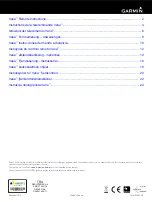
HCT User Guide
page 9
Copyright © 2001 HutchColor, LLC
User_Guide_43.docx 2/10/19
Flare in a drum scanner, with normal gamma (left) and gamma 3.0 (right)
The best cure for flare is to change scanners or clean the optical system. If these are not viable, use
the largest target possible. For example, never use a 35mm target when a 6x7cm or 4x5 inch target
is available. Flare can be reduced by scanning the target two or four times, in 180° or 90° steps,
then carefully registering the separate scans as Photoshop layers set to 'Darken' mode, then
flattening the assembly to a single TIFF image.
Flare may also be minimized by applying low-amplitude, large- radius USM to a duplicate Photoshop
layer set to 'Darken', but this method is highly experimental.
Clean-up in Photoshop
Examine the target at 100% magnification and CAREFULLY remove any blemishes with the clone
brush (rubber stamp) tool. Be careful not to clone from one patch to another! Most profiling software
uses only the central 50% of each patch. Ignore blemishes near the patch edge.
Blemishes outside the central 50% of each patch can be ignored
WARNING
: Do NOT attempt to remove grain from the target scan, e.g. with an anti-noise filter. Believe it
or not, a grainy target scan can actually improve profile accuracy because, when averaged by the
software, grain can actually increase the effective bit-depth of the image!
White reference for reflective scanning
Prior to scanning the target the scanner or digital camera must be calibrated on the same white
reference material used in live work. Some scanners self-calibrate while other manufacturers supply
a reference material. If none of these are available, calibrate on a piece of extremely bright, white,
MATTE material. Ensure a steady supply and replace the white calibration patch whenever it gets
dirty.
Содержание HCT
Страница 1: ...USER GUIDE Version 43 February 2019 ...










































